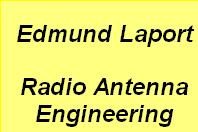

Antentop is FREE e-magazine devoted to Antennas and Amateur Radio an
Special page devoted to
Some Thoughts on Regenerative Receivers

Custom Search
|
ANTENTOP- 01- 2010, # 012 |
Some Thoughts on Regenerative Receivers |
|
|
Hallicrafters
S-20R Credit Line: http://www.radionewjerusalem.com/Radio/S-20R%20Hallicrafters.html |
||
|
In the 1960s, the ARRL handbook showed an interesting
receiver along these lines. It used a 1700 kHz IF frequency with
the local oscillator between the 40 and 80 meter ham bands. The
1700 kHz IF had good selectivity with a half-lattice crystal filter.
The front end was tuned to either 40 or 80 meters, as desired. As to controlling the regeneration, any scheme that
allows you to control the feedback will work. The more common
themes: - Armstrong "RF" throttle
- another expensive variable capacitor, plus frequency issues. - Variable resistor across the tickler coil -- "kill"
some of the feedback signal. My original 1T4 regenerative receiver
used this scheme. - Change filament voltage! Used in many of the early
directly heated filament tubes. - Change the screen voltage in a Pentode. Probably one
of the cleanest strategies. This is used in the World War II Paraset design. - Change the coupling between the tickler
and tuning coil mechanically. - Add a variable resistor in the emitter circuit (Kitchin's
design, who uses a Hartley oscillator, and he also uses a separate
diode detector). This reduces the loop gain of the oscillator. Change the plate voltage of the detector. |
Again, due to the various interactions, and a desire
to get smooth transition into regeneration, some sort of good
voltage regulation for the detector stage is essential. This doesn't
add any great complexity to the design with the availability of
nice integrated circuit voltage regulator chips. Kitchin uses
a simple string of diodes to get around 1.5 volts for the detector. Now, for an analysis of a couple of current commercial
kit designs. Where I live in rural "Slower Lower" For my first regenerative receiver kit, I chose the
Ten-tec 1253. As I mentioned, the band switching scheme is quite
clever -- it uses a series of inductors switched by PIN diodes
and a counter. It also has nine bands. This is mostly due to the
rather limited tuning range with the varactor diode, but nine
bands is pretty cool. It covers from
the low end of the 160 meter band up through 13 meters with a
few unimportant gaps. The upper frequencies are a bit problematical,
but this is typical of both vacuum tube and solid state regenerative
receivers. If you want to go to higher frequencies, and use a
regenerative detector, then the Regenodyne approach is a good
bet. |
|
|
Page 69 |
||
63 64 65 66 67 68 69 70 101 102
 |
 |
 |
 |
Just for Fun:

Powered byIP2Location.com
Thanks for your time!
Last Updated:
January 22, 2020 21:54





